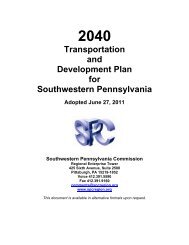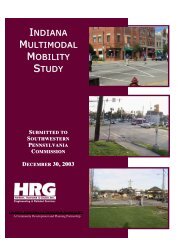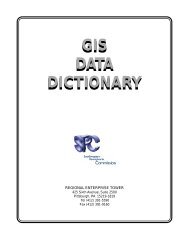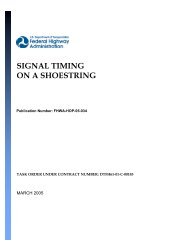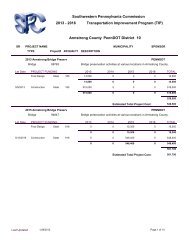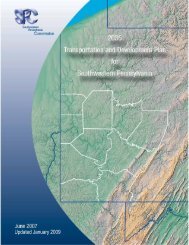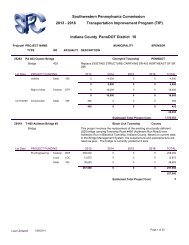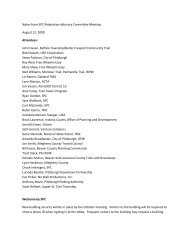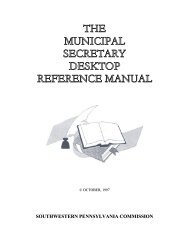Adaptive Control Software – Lite (ACS-Lite) Implementation Template
Adaptive Control Software – Lite (ACS-Lite) Implementation Template
Adaptive Control Software – Lite (ACS-Lite) Implementation Template
Create successful ePaper yourself
Turn your PDF publications into a flip-book with our unique Google optimized e-Paper software.
The Run-Time Refiner utilizes the optimization principles of balancing the degree of<br />
phase utilization on each phase, by tuning splits, and capturing the most traffic as<br />
possible on the coordinated phases during the green, by tuning offsets. These two<br />
algorithms use the concept of being “driven directly by the data” using very simple<br />
models of how predicted changes to parameters impact the operation. In essence, <strong>ACS</strong>-<br />
<strong>Lite</strong> operates on the principle that the recent past predicts the near future (i.e. the<br />
conditions you see now will continue in the next few cycles). While the performance<br />
response times (i.e. how long it takes <strong>ACS</strong>-<strong>Lite</strong> to find the “right” set of traffic<br />
parameters for a given situation) suffer slightly due to the lack of a traffic model, the<br />
savings in configuration and maintenance/calibration are substantial. Both algorithms<br />
use a “surrogate” measure for delay & stops rather than attempting to calculate delay<br />
from a vehicle-movement-based traffic model.<br />
Split tuning<br />
The split adjustment algorithm executes on each controller independently. The cycle<br />
time is assumed to be fixed and constant on all controllers in the system, although this is<br />
not a necessary assumption. First, the surrogate performance measure phase utilization is<br />
calculated for each split by determining how much of the available green time is being<br />
used. Essentially this is a measure of the degree of saturation on the approach. Splits<br />
that are using all of their allotted time being occupied by traffic are candidates for<br />
increased split values. Similarly, splits that are not using all of their available green over<br />
the last few cycles are candidates to give up their time to other phase splits. The basic<br />
algorithm reduces the maximum predicted phase utilization of any phase on the controller<br />
by exchanging time amongst the various phases. This has the net effect of balancing the<br />
degree of utilization across all phases. To preserve opportunities for progression on<br />
coordinated movements, a bias is added to each coordinated phase utilization estimate to<br />
ensure extra green time is allocated to the coordinate phase. This is visualized cycle-bycycle<br />
on the <strong>ACS</strong>-<strong>Lite</strong> software interface as shown in Figure 2.<br />
Figure 2. Example of phase utilization estimates for an intersection.<br />
Figure 2 shows the phase utilization percentage and a color-coded representation (green<br />
for low utilization, yellow for medium, and red for high utilization). The numbers above<br />
the average utilization estimate indicate the maximum flexibility that <strong>ACS</strong>-<strong>Lite</strong> has to



